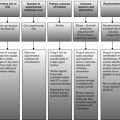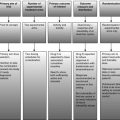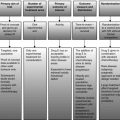13 Anthony Rossini, Steven Green and William Mietlowski In oncology clinical development, phase II has the widest range of possible goals which can be addressed at this stage. In contrast, there is general agreement for what is to be done at phase I and phase III. Phase I generates the initial data used to select a dose which can be used relatively safely in a larger population. Likewise, phase III studies aim to establish evidence justifying efficacy and safety enabling health authority approval. Generally, these designs focus on clinically relevant survival and event-time endpoints. Phase II trials, on the other hand, have the simple but ill-defined mission of providing evidence for one or more of the many possible strategic paths between these two phases. Specifically, the phase II programme must bridge between the current knowledge about the initially established dosing regimen and the phase III design to support registration. There are many possible paths, representing the many approaches to learning about how to use a compound to treat cancer. The diversity of clinical development paths can also be deduced from the range of clinical trial designs described in this book. This chapter will focus on selecting phase II designs originating in response to strategies embodied in a commercially oriented clinical development plan (CDP). Commercially sponsored trials are a component of a pre-specified, evolving, comprehensive CDP. A CDP can be formally thought of as a document which frames the development of a compound in terms of medical indications, staging of activities and collection of data for justifying registration across possible indications. This contains justification for components which the development team considers essential to develop the compound. The choice of trial designs should address the CDP’s objectives, conditional on previous results. The goal of the CDP is to provide a roadmap of activities to efficiently either deliver a commercially viable product or terminate development early for futility and/or safety issues. A commercially viable product requires both regulatory approval and agreement by payers to reimburse. The selection process described in this chapter takes into account pharmaceutical drug development challenges and drivers. These frame the constraints and requirements which inform the selection of the phase II design(s). The source for these challenges arise both internally and externally and relate to both scientific and operational considerations. Internal clinical development decisions which impact phase II include timing and prioritisation of the compound in relation to other compounds in the portfolio. External clinical constraints and drivers include current medical practice, payer approaches and competition from external compounds. Constraints include both financial resources and shared internal specialised employee skills which are in limited supply and required for more sophisticated designs. Some parts of this chapter are forward looking and represent practices which are not yet incorporated. Other parts are retrospective and may be suboptimal or obsolete due to recent statistical, clinical or regulatory landscape changes. This chapter just reflects a snapshot in time of current thinking. Multiple options often exist for clinical development strategies at the planning stage for the phase II programme, with acceleration and hesitation pressure coming from both the development team and the external environment. The selection of one or more strategies in the face of uncertainty informs the choice of phase II design(s) to be implemented. The range of strategic goals that are addressed in this chapter consists of those for potential registration, establishing exploratory activity, regimen selection, prediction of phase III success, safety trials and prospective identification of targeted populations. We next describe some of the commercial challenges and drivers before discussing strategic considerations and how they can inform study design selection. The environment for commercial clinical drug development can change frequently, making fixed as well as long-term planning difficult. New information arises regarding science, competitors, regulators and payer organisation; payer organisation can cause an extreme change in plans, from rapid acceleration to a complete halt of the programme. In addition, corporate philosophy and goals, as well as organisational structure, can also impact a development programme’s strategy. Competition, both internal and external, is a difficult factor to manage. Competition can take the form of internal competition between indications for a compound’s resources, as well as between compounds which address the same family of indications. The CDP should outline how to address this. The approach in this chapter naturally emphasises strategic goals based on commercial experience. These strategic goals reflect both common, clinical and scientific goals and relevant corporate financial opportunities and challenges, since maintaining positive cash flow, and the extent of that income source, will dictate potential opportunities and risks. For any publicly traded company, the value of the investigational portfolio is intrinsically incorporated into the value of the stock price. A failed phase III trial can strongly influence the stock price of a company if this compound reflects a sizable portion of the stock price as well as an erosion of confidence in the company to register drugs. Decisions which benefit the company are at the level of the clinical trial, such as minimising patients who are exposed to toxic drugs via careful sample size determination and interim analyses. Other decisions at the strategic level, including selection of drugs with most appropriate benefit/risk balance, and the efficient development of viable therapies also benefit both patients and society as a whole. While this could be done formally using a decision-theoretic framework, it is often informally managed. The CDP provides guidance in terms of overall goals and approaches for clinical development. Since it has a strategic focus for approaching clinical development, a selection of trial designs based on strategic deliverables is simpler for teams to use. We first give some examples of overall programme-level strategies that could be under consideration, before moving forward with how a few common phase II strategies are addressed. Overall programme strategies are described differently from, and yet contain, the phase II strategies which are being considered. For example, one increasingly popular development strategy is to target a rare but well-characterised oncological indication, register the compound for treatment in that setting and then construct a series of interrelated development programmes to expand into different indications. These expanded indications are selected by considering the targets which represent a component of the tumour, unlike the original indication where the target is found more homogenously across the whole tumour. Another strategy is to leverage chemical synergies and initially target a medium-sized indication based on initial pre-clinical and phase I results, combined with how they may relate to existing medical practice and needs. Other common strategies include pairing new treatments with existing ones for combination therapies, as well as including in the initial plans a focus on setting up a possible diagnostic/compound combination. Phase II studies address the middle stage of these strategies. For each example given above, multiple questions could be addressed depending on the specific tactical implementation of the global CDP strategy. The rest of this section focuses on the phase II-specific strategic aspects. The summary within Table 13.1 illustrates some examples of matching trial design options to development strategies. For each strategy, multiple phase II designs are observed to have been employed, and some of these designs can be seen to have addressed multiple strategic objectives. This table is just a historical view; proper due diligence requires searching the literature for improvements and newer designs which may include any of those listed within Chapters 3–7, understanding available data in the specific setting and the current state of regulatory requirements and payer opinions. Based on an internal review of phase II experiences, we have identified six strategic goals that have occurred with high frequency, specifically: Table 13.1 Roadmap for phase II: strategic situations. A clinical development programme can have multiple phase II trials, sometimes answering the same strategic question on a different topic (different safety foci, different subgroups to characterise). Alternatively, a single phase II trial can address multiple goals. We now cover each strategy and describe considerations as well as some of the trial design features which are of increasing importance for each particular strategy. The first strategic goal discussed is the accommodation of possible registration based on strong positive early results. This could be considered a feasible strategic goal based on pre-clinical data, phase I study results and the overall scientific and medical rationale for development. The considerations in this section are primarily applicable to situations when conditional or accelerated approval is based solely on phase II or earlier trial data. Although this section primarily relates to trials designed for registration, it also applies to registration from trials in which overwhelming evidence of efficacy was observed although not planned for registration. Registration trials designed to meet the usual requirement of ‘an adequate and well-controlled study’ are out of scope for this section; for example, we do not cover intended phase III trials powered to detect clinically meaningful differences at the one-sided 2.5% level of significance. This strategic goal intersects regulatory and statistical considerations. It is critical to remember that the regulatory environment is constantly changing and requires regular review during the overall clinical development process. For phase II trials designed for registration, it is even more critical to review the most current regulatory guidance and recent relevant regulatory events, and regulatory affairs specialists need to be involved in design discussions. Although regulatory approval based solely on phase II data still remains possible in both the United States and European Union (EU), its applicability may now be confined to indications for which there is no approved or available therapy and will likely require demonstration of clear clinical benefit and efficacy. One necessary but not sufficient programme-related requirement is that the accelerated approval (phase II) trial must be part of a well-conceived and comprehensive CDP. This CDP should include at least two randomised phase III trials for the registered indication which are planned as part of a post-marketing approval requirement. These phase III trials should be enrolling patients at the time of accelerated approval. The conditional marketing authorisation approval process in the EU is analogous to accelerated approval in the United States. However, it must be renewed on an annual basis. This renewal requires timely completion of studies demonstrating clinical benefit. Health authority meetings should be planned to confirm the adequacy of the registration plan including post-marketing approval commitments. For example, registration using single-arm trials based on objective tumour response rate may require evidence of strong positive benefit/risk, require documentation of unmet medical need or represent a rare indication. If the planned phase II study for monotherapy or combination studies is intended for potential registration, this should be confirmed with the health authorities prior to the start of the study, for example, at the end of a phase I meeting. The briefing documents should also contain a detailed description of the planned phase II trial (detailed protocol synopsis), an overall CDP which includes concrete and viable plans for post-approval confirmatory trial(s) and a discussion about the total number of patients in the proposed submission to monitor safety (i.e. the size of the safety database). At the present time, the protocol would need to be submitted for an FDA Special Protocol Assessment (SPA), with content of the briefing documents similar to those prepared to discuss phase II-based registration with the Committee for Medicinal Products for Human Use (CHMP). They should provide evidence that the planned development would meet the requisite statutory requirements for conditional approval or approval under exceptional circumstances. For a single-arm trial, the absolute minimum evidence could be, for example, clear documentation that the investigated indication represents an unmet medical need (e.g. documentation that patients had progressive disease under standard of care) or represents a rare indication for which a randomised controlled trial is not feasible. Clearly, more evidence will be warranted if there are questions from regulators or others who are weighing the quality of the evidence. While it is possible for a randomised controlled phase II trial to demonstrate overwhelming evidence of efficacy, the standards are rather stringent (see Section 13.3.2.2). The screening randomised phase II trial should incorporate the same degree of rigour as the planned phase III trials. Ideally, it should use the same endpoint and patient population as the planned phase III trials. The statistical considerations can be discussed in relation to the planned role of phase II in the development strategy, that is, whether the phase II trials are specifically targeted for accelerated approval and/or conditional registration.
Phase II oncology trials: Perspective from industry
13.1 Introduction
13.2 Commercial challenges, drivers and considerations
13.3 Selecting designs by strategy
13.3.1 Basic strategies addressed by phase II studies


13.3.2 Potential registration
13.3.2.1 Regulatory considerations
13.3.2.2 Statistical considerations
Stay updated, free articles. Join our Telegram channel

Full access? Get Clinical Tree






